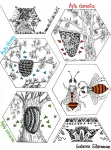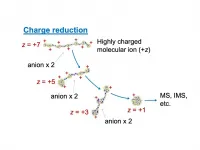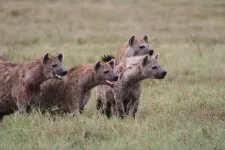Of the honey bee dance
Different moves, one message
2021-01-19
(Press-News.org) It is early in the morning. Ebi and his colleagues try not to twitch as they stare intently at a rectangular box filled with sugary treats. These aren't for them, but for the honey bees that they study. The tiny buzzers toggle between the sugar 'feeder' and the hive, which are a few metres apart. Interestingly, the bees that visit the feeder aren't secretive about this new found food source. They graciously advertise its location to their nest mates and over time more bees are seen buzzing to the feeder.
This behavior has been observed and researched for decades; but still, the question of how bees communicate within the noisy quarters of a beehive continues to sting scientists with curiosity.
"Honey bees are unique in that they not only alert their nest mates, but have also evolved a symbolic communication in the form of a dance - a waggle dance," explains Axel Brockmann, whose lab is trying to untangle this complex social behavior in bees.
The waggle routine is a dance move that looks like the number eight. Unpretentious on the outside, the dance is packed with detailed information about where to find food; both the distance and direction of the food source from the hive. Every honey bee species appears to have a customised version of this dance based on which sensory modality it uses to convey the message - visual, olfactory or auditory. While the 'dancers' and the dance itself have been extensively investigated, little is understood about how the bee audience perceives this message.
In the lab's recent paper published in the journal Animal Behavior, Axel's group shows that in spite of the diverse signals in the waggle dance observed among honey bee species, the behaviour of responder bees are very much alike. In fact, even the vantage points that they choose to observe the dance are comparable. The researchers suggest that message within the waggle dance is interpreted by very similar mechanisms across species.
Among the five honey bee species found in India, three have made the serene GKVK and NCBS campus (Bangalore) their home. They are Apis florea, Apis dorsata and Apis cerana. While the former two species build hives on open tree branches, Apis cerana hides away within the dark cavities of trees. This fundamental difference in nesting location influences the dance stage, the light that shines on the dancers and ultimately the dance message. Hence the team decided to use this as a paradigm to explore the behaviour of responders in the three species.
Before I tell you how the researchers went about finding the answers - let me ask you a question - What is the first thing you would ask for while booking movie tickets?
Most of us would go for seats with the best view, wouldn't we? Well, if a movie viewing experience calls for the finest seat, why wouldn't bees want to take the best spot for a performance that tips them off about a sumptuous meal? This is exactly what the team looked for.
Imagine the dancer bee waggling in a Lilliputian amphitheater. The responders were found to prefer a nice side view, almost perpendicular to the dancer. The authors explain that this is likely a perspective that is convenient to view the dancer's wagging abdomen that holds some crucial clues.
This preference for a particular vantage point and the responder bees' overall behavior were quite similar across all the three species and seemed to follow the footsteps of the textbook species - Apis mellifera.
The only parameter that was different among the responder bees of the three species was the number of followers that actually observed the dancer. It turns out that Apis florea and Apis dorsata had more dance followers than Apis cerana.
So what does all this mean?
"Our findings suggest that the mechanisms of distance and direction communication are the same in all the honey bee species and this information is likely transmitted via antennal contacts," explains Ebi. He feels that the other sensory modalities such as the visual and auditory signals generated by the dancer could assist in grabbing the attention of the responders - very much like how humans stress words or gesture while talking.
In the larger context, is there anything other than human curiosity that entices researchers to study social behavior in bees, I asked Axel.
"Absolutely! Honey bees are nature's premium pollinators, yet research on the biology and behavior of Asian honey bees is sparse. The current study is part of a larger initiative. We hope that this project will boost our understanding of honey bees, which can in turn be used to make significant strides towards their conservation," he says.
So, now we know why the great honey bee dance creates such a buzz!
INFORMATION:
[Attachments] See images for this press release:

ELSE PRESS RELEASES FROM THIS DATE:
2021-01-19
Mass spectrometers (MS) have become essential tools in chemistry and biology laboratories. The ability to quickly identify the chemical components in a sample allows them to take part in a diverse array of experiments, including radiocarbon dating, protein analysis, and monitoring drug metabolism.
MS instruments work by giving the analyte molecules an electric charge, and shooting them through a region of space with a uniform electric field, which curves their trajectory into a circle. The radius of the circle, which depends on the ratio of the molecule's mass to its charge, is detected and compared with known samples. Because the method can only measure this ratio, not the mass itself, excess charges can lead to inaccurate or ambiguous results.
Now, a team of researchers lead ...
2021-01-19
"Stripy zebra, spotty leopard, ...". Kids never become bored pinpointing animals based on their unique body patterns. While it is fascinating that living creatures develop distinct patterns on their skin, what may be even more mysterious is their striking similarity to the skin of frozen liquid metals.
Pattern formation is a classic example of one of nature's wonders that scientists have pondered for centuries. Around 1952, the famous mathematician Alan Turing (father of modern computers) came up with a conceptual model to explain the pattern formation process of a two-substance system. Such patterns are also called Turing patterns thereafter.
Pattern formation is also commonly adopted by manmade systems and this is especially true in the ...
2021-01-19
Fungi are among the world's oldest and most tenacious organisms. They are now showing great promise to become one of the most useful materials for producing textiles, gadgets and other construction materials. The joint research venture undertaken by the University of the West of England, Bristol, the U.K. (UWE Bristol) and collaborators from Mogu S.r.l., Italy, Istituto Italiano di Tecnologia, Torino, Italy and the Faculty of Computer Science, Multimedia and Telecommunications of the Universitat Oberta de Catalunya (UOC) has demonstrated that fungi possess ...
2021-01-19
The compulsory collection of DNA being undertaken in some parts of the world is not just unethical, but risks affecting people's willingness to donate biological samples and thus contribute to the advancement of medical knowledge and the development of new treatments, says a paper in the European Journal of Human Genetics, published online* today [18 January 2021].
Citing abuses being carried out in China, Thailand, and on the US/Mexico border, the authors1 call on scientific journals to reexamine all published papers based on databases that do not meet accepted standards of ethical approval, and demand an end to collaborations between academic institutions worldwide and those in countries carrying out unethical DNA collections. ...
2021-01-19
As we enter the era of superintelligence and hyper-connected Fourth Industrial Revolution, the importance of high-density and high-performance memory is greater than ever. Currently, the most widely used NAND flash memory has issues of high power consumption, slow operation speed, and vulnerability to repetitive use since it relies on the charge trap effect to store information. To this, a POSTECH research team has recently demonstrated a ferroelectric memory that exceedingly surpasses the performance of the conventional flash memory in terms of operation speed, power consumption, and device reliability.
A POSTECH research team - led by Professor Jang-Sik Lee, and Ph.D. candidates Min-Kyu Kim and Ik-Jyae Kim of the Department ...
2021-01-19
Maxwell equations govern the evolution of electromagnetic fields with light being a particular solution of these equations in spaces devoid of electric charge. A new study published in EPJ C by Alexei Morozov and Nikita Tselousov, from the Moscow Institute of Physics and Technology and the Institute of Transmission Problems, Russia, respectively, details peculiar solutions to the Maxwell equations--so-called Maxwell knots. The research could have applications in the fields of mathematical physics and string theory.
"We usually think of light as the plane waves. It was a breakthrough when ...
2021-01-19
Two giant radio galaxies have been discovered with South Africa's powerful MeerKAT telescope. These galaxies are thought to be amongst the largest single objects in the Universe. The discovery has been published today in Monthly Notices of the Royal Astronomical Society.
Whereas normal radio galaxies are fairly common, only a few hundred of these have radio jets exceeding 700 kilo-parsecs in size, or around 22 times the size of the Milky Way. These truly enormous systems are dubbed 'giant radio galaxies'.
Despite the scarcity of giant radio galaxies, the authors found two of these cosmic beasts in a remarkably small patch of sky.
Dr Jacinta Delhaize, a Research Fellow at the ...
2021-01-19
Scientists from the Leibniz Institute for Zoo and Wildlife Research (Leibniz-IZW) have found that interacting with other males is more "stressful" for low-ranking than for high-ranking male spotted hyenas. This restricts the time and energy low-ranking males can invest in courting the most desirable females and is therefore a key factor for their lower reproductive success than their high-ranking rivals. This mechanism seems to be more important in determining the number and quality of offspring than physical traits such as attractiveness and fighting ability. These insights were possible owing to a combination of extensive field and lab work - over 20 years of searching and identifying thousands ...
2021-01-19
A research team led by Professor Chi-Ming CHE and Dr Jun YANG, from the Research Division for Chemistry and Department of Chemistry at the Faculty of Science of the University of Hong Kong, has resolved a long-standing fundamental problem in the field of metal-metal closed-shell interaction. This work has been published in the journal Proceedings of the National Academy of Sciences (PNAS).
Metal-Metal closed-shell interaction, also known as metallophilicity, has a huge impact in diverse fields of chemistry, such as supramolecular chemistry and organometallic chemistry. Early reports on metallophilicity could be traced back to the 1970s. Many leading theoretical chemists ...
2021-01-19
According to current studies, the COVID-19 disease which is caused by the SARS-CoV-2 coronavirus comprises at least five different variants. These differ in how the immune system responds to the infection. Researchers from the German Center for Neurodegenerative Diseases (DZNE) and the University of Bonn, together with other experts from Germany, Greece and the Netherlands, present these findings in the scientific journal "Genome Medicine". Their results may help to improve the treatment of the disease.
Infection with SARS-CoV-2 can manifest in different ways: Many of those affected do not even seem to notice the presence of the virus in their bodies. In other ...
LAST 30 PRESS RELEASES:
[Press-News.org] Of the honey bee dance
Different moves, one message





